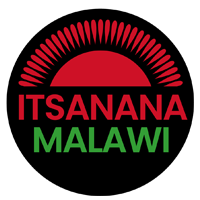The gateway for overland crossings into Tanzania, Karonga is the largest and oldest town in the far north of Malawi, stretching westward from the reedy lakeshore some 40km south of the Songwe border post. It was established in 1883 as an African Lakes Corporation (ALC) outpost, and went on to play an important role in the suppression of the slave trade and World War 1 hostilities with neighbouring German East Africa. Karonga remained somewhat isolated until 1981, when the surfaced M1 was extended this far north, and it enjoyed significant economic benefits when the first bridge across the Songwe River on the Tanzanian border was constructed in 1988. The town received another economic shot in the arm in 2008 with the opening of the controversial Kayelekera Uranium Mine 40km to the west. Today, Karonga – rather surprisingly – ranks as the largest port town anywhere on the shore of Lake Malawi, with a population estimated at 45,000. For all that, it is no metropolis, and while its urban amenities make it a useful first stop for fresh arrivals from Tanzania, the only real tourist attraction is the Cultural & Museum Centre which focuses on the region’s fascinating history and prehistory.
The gateway for overland crossings into Tanzania, Karonga is the largest and oldest town in the far north of Malawi, stretching westward from the reedy lakeshore some 40km south of the Songwe border post. It was established in 1883 as an African Lakes Corporation (ALC) outpost, and went on to play an important role in the suppression of the slave trade and World War 1 hostilities with neighbouring German East Africa. Karonga remained somewhat isolated until 1981, when the surfaced M1 was extended this far north, and it enjoyed significant economic benefits when the first bridge across the Songwe River on the Tanzanian border was constructed in 1988. The town received another economic shot in the arm in 2008 with the opening of the controversial Kayelekera Uranium Mine 40km to the west. Today, Karonga – rather surprisingly – ranks as the largest port town anywhere on the shore of Lake Malawi, with a population estimated at 45,000. For all that, it is no metropolis, and while its urban amenities make it a useful first stop for fresh arrivals from Tanzania, the only real tourist attraction is the Cultural & Museum Centre which focuses on the region’s fascinating history and prehistory.
Cultural Museum & Centre of Karonga
If you require any further details with regards to accommodation please emailwawamalawi@africamail.com and we will happily recommend a place.
Karonga lies on the M1 about 225km north of Mzuzu and 590km from Lilongwe. The road from Lilongwe and Mzuzu is surfaced in its entirely and covered by a steady stream of buses and minibuses, including a daily Axa Coach to.from Blantyre via Lilongwe and Mzuzu. The minibus fare from Mzuzu is Mk800. Matola pick up trucks and minibuses ply back and forth all day between Karonga and the Tanzanian border post at Songwe. After crossing into Tanzania, it is easy to get a lift on a bicycle taxi through to the main Mbeya-Kyela road, where you can pick up a bus in the direction of your choice. If you’re heading towards Zambia, you must first aim for Chitipa.
Briggs, P. (2010). Karonga. In: Briggs, P Malawi. 5th ed. Connecticut: Bradt. p295.

